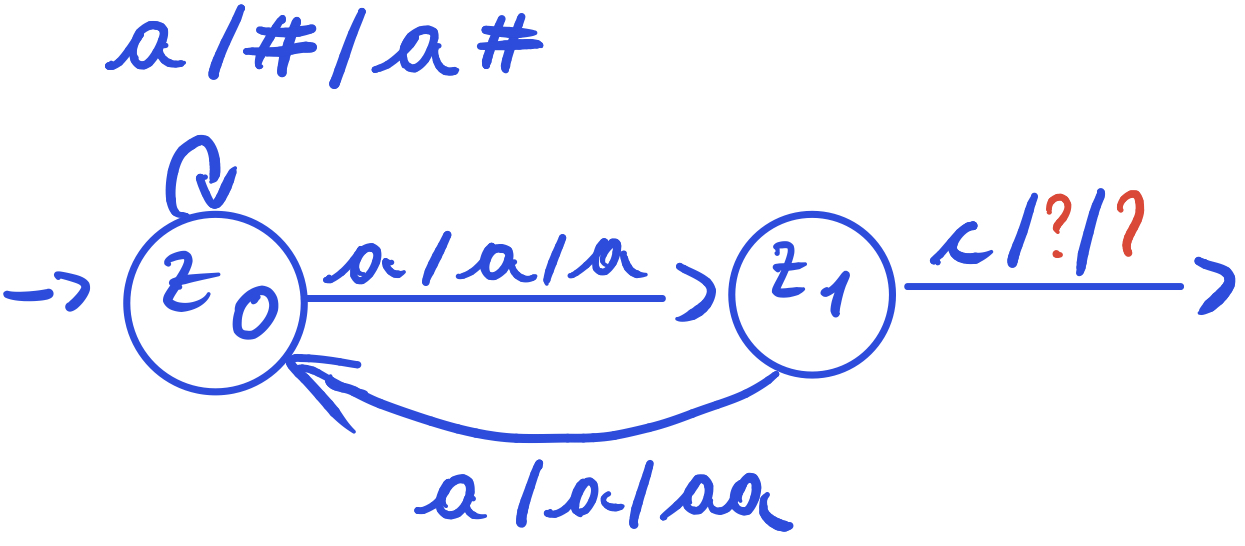Given the following language: L = {$a^{2m}$ $c^{4n}$ $d^{n}$ $b^{m}$ : m,n >= 0} I’m trying to design a PDA. My aproach is:
-for every 2 ‘a’ push an ‘a’
-for every 4 ‘c’ push a ‘c’
-then pop them to solve the 2nd half of the language
This is the first part to count 2 ‘a’, but the ‘c’part is not very clear:
Any hints or solutions for the problem: ‘’for every 4 ‘c’ push a ‘c’ on the stack‘’
Thanks!
